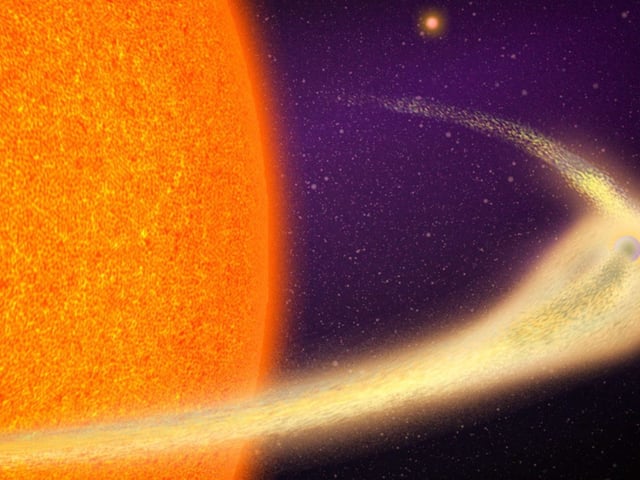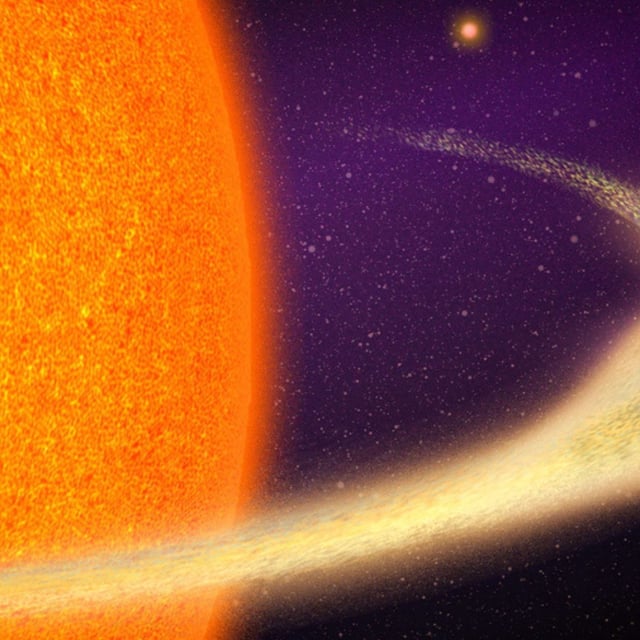Overview
- BD+05 4868 Ab, located 140 light-years away, is disintegrating in real time, losing mass equivalent to Mount Everest every 30.5 hours.
- The planet orbits its star 20 times closer than Mercury to the Sun, with surface temperatures reaching 1600°C, causing magma to evaporate into space.
- Its trailing dust tail, composed of evaporated material, extends up to nine million kilometers and blocks light during transits, leading to its discovery via NASA’s TESS data.
- Only three other exoplanets are known to undergo similar disintegration, but BD+05 4868 Ab is evaporating at the fastest rate observed.
- Scheduled James Webb Space Telescope observations this summer aim to analyze the composition of the dust tail, providing insights into the planet's interior and the dynamics of extreme planetary environments.

